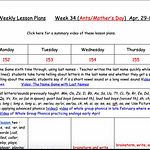This is a re-post from July 7, 2021, with a few updates to my thoughts and comments, which appear throughout.
As you think about and plan for your phonics instruction in the upcoming school year, there are several characteristics of a strong program to consider as well as common failures. In this post, I will summarize what I know to be true and confirmed by Wiley Blevins, author of Choosing and Using Decodable Texts: Practical Tips and Strategies for Enhancing Phonics Instruction (2021).
Characteristics of Strong Phonics Instruction
Readiness Skills Phonemic awareness and letter recognition will help students be more successful with decoding and encoding. Be sure to address both of these systematically, explicitly, and regularly during Tier 1 instruction.
I work on both of these every day for 15-20 minutes during whole group phonics instruction and then again, application-style, during small group instruction and a 30-minute daily writing time. I also incorporate these nonsystematically, whenever possible, into all other aspects of the day.
Scope and Sequence There is no “right” scope and sequence, but good ones start with high-utility vowels and consonants so words can be formed as early as possible. They also separate confusing letters and sounds and have a built-in review and repetition cycle to ensure mastery.
I do not use a program and my phonics scope and sequence (to be updated and shared later this summer) has proven to be very successful over the years. This past school year, an area in which I improved was in separating confusing letters and sounds. I did not teach b and d— the two most often confused letters —close together nor p and q since q is not a high utility letter and was saved until the very end. One goal I have for the upcoming school year is to continue thinking about the order in which I teach the letters and sounds.
Blending This is how children string together sounds to read a printed word. Blending must be modeled frequently and children must have opportunities to practice it with connected text.
I model and have students start blending sounds during phonemic awareness training about three weeks into the school year. Last school year I had students start blending sounds much earlier in small group instruction using the letters and sounds that had been introduced during whole group instruction and definitely saw a difference in how quickly they learned to blend and how they did on their mid-year testing.
Dictation Dictation is guided spelling. It provides an opportunity for students to apply their phonics skills to written work. It should begin in early kindergarten.
I feel my students get plenty of opportunities to apply their phonics skills to actual writing. One way in which I can improve, however, is to do more dictation (telling them what to write as opposed to them coming up with their own ideas). I plan on continuing to have a dedicated day each week during small group instruction for writing continuous text. This upcoming school year, I look forward to incorporating the ideas I learned here (look under the heading How to Practice Sentence Writing).
Word Awareness Activities There are many activities that ensure that phonics instruction is active, engaging, and thought-provoking.
I feel that this is a strength of mine. My students love phonics and are always intrigued by how letters and sounds work. I know that the name game activity that I do delivers in so many ways from the first day of school to the last. Students love their name and their peers’ names and the name game is always engaging and fascinating to them.
High Frequency Words Most high frequency words can be sounded out. Irregular high frequency words, however, need to be analyzed with students so they see which sounds are easy and which need to be “remembered by heart” (thus why irregular words are often called heart words).
In addition to creating 34 lists of words according to phonics/spelling patterns, I have incorporated the heart word method and continue to refine my instruction and student practice opportunities.
Reading Connected Text Students need regular opportunities to read controlled decodable text so they feel successful with reading. They should also have the opportunity to encode (write) the same type of words and document their understanding of such.
This past school year I incorporated way more decodable/readable text into my small group instruction and reading folders. I learned last summer that text does not need to be 100 percent decodable, that even 70-80 percent decodable is effective, but this past school year I could see the drawbacks to using texts that were less than 95% decodable and thus tried to avoid doing so. I discovered Half-Pint Readers, decodables that are comprehensible and greatly enjoyed by my students, and also wrote many decodable fluency ladders and continuous texts (available for free with your paid subscription).
Common Phonics Failures
Nonexistent or inadequate review and repetition cycle
Lack of opportunities to apply phonics learning to real reading and writing experiences
Inappropriate reading materials to practice skills
Ineffective use of the gradual release model (students need to do more heavy lifting than the teacher)
Too much time lost during transitions
Teacher does not know enough about research-based phonics routines
Inappropriate pacing of lessons (don’t spend too much time on the easier, less-meaty part of a lesson)
No comprehensive or cumulative mastery assessment tools (assess students over an extended period of time, not just at the end of each week or quarter)
Transitioning to multisyllabic words too late
Overdoing isolated skill work (it is important to attend to the other strands of Scarborough’s reading rope).
Great things to keep in mind as you think through how you’ve taught phonics in the past and the changes you might make for the upcoming school year. What are your goals or implementation plans?














Share this post